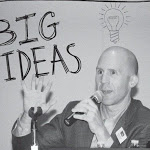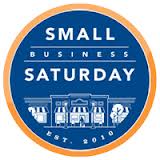Kip Wetzel, Executive Director of Escalations and Social Media Strategy at Comcast, makes a strong case for social media as a customer service channel. I saw Kip speak at the recent Social Media World Forum (SMWF) and was lucky enough to follow that up with a lengthy interview. Here is part one of that interview in which Kip explains the notion of escalation, why it is important to treat all customers equal (even Bruce Springsteen) and how Comcast’s approach has evolved over the last few years.
Drew: For the readers at home, can you explain what escalations are?
We have an operation that spans our entire reach of customers and our entire footprint of where we operate. Escalations for us are when we are at a point with the consumer that we need to go beyond a traditional front-line customer service representative. That’s typically a level of frustration that something hasn’t worked or something hasn’t gone right.
Also on the other edge of that sword for us, it’s an opportunity to really make a difference for that customer. When we get into an escalation scenario, we are trying to ensure that we can get the most rapid support for a customer based on something that may have been habitual, a question that hasn’t been answered, and an item they want addressed. We have a team that’s very dedicated and a very coordinated effort across all of the markets that we serve to ensure that we can get that resolution in place for that customer.
Drew: So how does social media fit into escalations?
The social media efforts that we do are a part of that escalation program. We don’t have separate stand-alone social media policies, escalation procedures and communications standards. We found that the standards, policies, and processes that we have in place already for the rest of our business translate well to social media. For us it was a nice way to extend our service model; to go out and meet customers where they were operating and leverage things that already worked for our business and apply it to Twitter, Facebook, Google Plus, and Pinterest.
Drew: So let’s imagine that Bruce Springsteen is having a problem with service—does the escalation process change?
Let me answer that by giving you one bit of context to how we operate. I’m a part of our national customer operations team, which means without the big title there means we are in our customer service department. A lot of other brands operate their social care strategy through comms, PR, or brand marketing. We’re very proud to operate this group out of customer service and our NCO group. Because of that, the answer to your question is no. We don’t think people should be treated differently.
Regardless of how I feel about Thunder Road or Born to Run, Bruce Springsteen is a paying customer just like his neighbor down the road who happens to be a schoolteacher, an accountant, or a lawyer. From the care perspective, things like cred and clout and influence or status — from a care perspective, we operate under the guise that everybody as a paying customer should get the level of service that they deserve as being a subscriber to Comcast products and services. That’s the way that we operate because of our operation in customer service.
Now, some variation on that is that the way that we might evaluate or triage that situation with Mr. Springsteen or other people is what is the triage of the impacting situation? If Customer A has a DVR that didn’t record Dancing with the Stars, but Customer B is a part of a commercial power outage where an entire portion of our service area is out, we will triage the situation differently; the severity of the impact of the situation to our customer base. Regardless of where Mr. Springsteen resides, we want to evaluate the situation itself, not Mr. Springsteen’s status on social media platforms.
Drew: Do your marketing folk have different thoughts on this?
Do my peers in product marketing or sales or content, acquisition content strategy — do they have a different feel of how influence or status or Kred score or Klout score should be considered? I would argue that they should. That’s inherent to their goals for our business and their respective operating strategies working for Comcast, but in the care world no.
Drew: How has your approach for using social for customer service evolved over the last year or two?
First, it’s been 4 ½ years since our first Tweets went out and after a significant amount of listening and observation, we’ve really focused on putting some strong operations in place. That comes in the form of better staffing, better service and hours of operation. With the same number of people, we are able to cover more platforms and more days and hours of the week.
We standardized our presence. Over those first couple of years, we had a lot of dabbling here and there with different names, different images, and different profile pictures. We’ve really tried to ensure that we standardized the way that people engage with us. And we’ve made sure we have a verified presence across multiple platforms, really driving home that we are the Comcast team and we are there to provide support.
Drew: Have the tools changed as well?
We’ve really started to expand our use of advanced technologies to listen, engage, and measure our work with customers. The early days it was just a byproduct of Twitter and South by Southwest 2008. The tools didn’t exist. Now that we’ve got advanced tools to help us listen and track things like sentiment, affinity, trends and topics, and keyword analysis, we’re matured to a point now that we’re looking at our key performance indicators.
Drew: Are you getting better at measurement as well?
I think very soon our ever-maturing data set will allows us to get more insight into what our social operation is. We can actually start marrying that and coupling that with existing data sets that we have across our business. The role that data plays to help us understand our operation; it continues to be an ever increasing important part of what we do and how we do it. Then starting to really get smart about what the impact of what we are doing.
We also have expanded, right? We’ve not expanded necessarily the team size, but we are really focused on being in touch with the players in be it Silicon Valley, be it Canada. These new tools and platforms that are coming — I think as you’ll know from the Comcast Cares story we had to sort of play catch up, which was there were a number of customers talking about us, asking questions, posing items, and we weren’t there. We had to play a bit of catch up. We were sort of meeting customers on the platforms that they were already active on. To subtly change in that we’re trying to do though now is we’re trying to greet those customers.
Drew: Do you continue to look at new social platforms?
As these platforms are evolving, we want to greet them. We want to have a presence there as customers adopt these tools, rather than having to play catch up like we did in the early days. That not only shows to our customers that we’re there, we’re active, we have a presence with them, but it also demonstrates our overall — I mean as a brand and a company to be sort of an innovative, technology-focused company. That’s been a big part of our maturity.
 Unless you’ve been hiding under a sleigh somewhere, chances are you’ve noticed the annual gathering of sloppy Saint Nicks otherwise known as SantaCon. At first glance, it’s simply a raucous day of naughty carols, random gifting and extreme silliness. But dig a bit deeper, and you’ll find this highly social event is a near-perfect metaphor for the state of social media.
Unless you’ve been hiding under a sleigh somewhere, chances are you’ve noticed the annual gathering of sloppy Saint Nicks otherwise known as SantaCon. At first glance, it’s simply a raucous day of naughty carols, random gifting and extreme silliness. But dig a bit deeper, and you’ll find this highly social event is a near-perfect metaphor for the state of social media.

